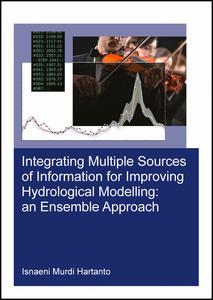

Most ebook files are in PDF format, so you can easily read them using various software such as Foxit Reader or directly on the Google Chrome browser.
Some ebook files are released by publishers in other formats such as .awz, .mobi, .epub, .fb2, etc. You may need to install specific software to read these formats on mobile/PC, such as Calibre.
Please read the tutorial at this link: https://ebookbell.com/faq
We offer FREE conversion to the popular formats you request; however, this may take some time. Therefore, right after payment, please email us, and we will try to provide the service as quickly as possible.
For some exceptional file formats or broken links (if any), please refrain from opening any disputes. Instead, email us first, and we will try to assist within a maximum of 6 hours.
EbookBell Team

4.4
72 reviewsThe availability of Earth observation and numerical weather prediction data for hydrological modelling and water management has increased significantly, creating a situation that today, for the same variable, estimates may be available from two or more sources of information. Yet, in hydrological modelling, usually, a particular set of catchment characteristics and input data is selected, possibly ignoring other relevant data sources. In this thesis, therefore, a framework is being proposed to enable effective use of multiple data sources in hydrological modelling.
In this framework, each available data source is used to derive catchment parameter values or input time series. Each unique combination of catchment and input data sources thus leads to a different hydrological simulation result: a new ensemble member. Together, the members form an ensemble of hydrological simulations. By following this approach, all available data sources are used effectively and their information is preserved. The framework also accommodates for applying multiple data-model integration methods, e.g. data assimilation. Each alternative integration method leads to yet another unique simulation result.
Case study results for a distributed hydrological model of Rijnland, the Netherlands, show that the framework can be applied effectively, improve discharge simulation, and partially account for parameter and data uncertainty.